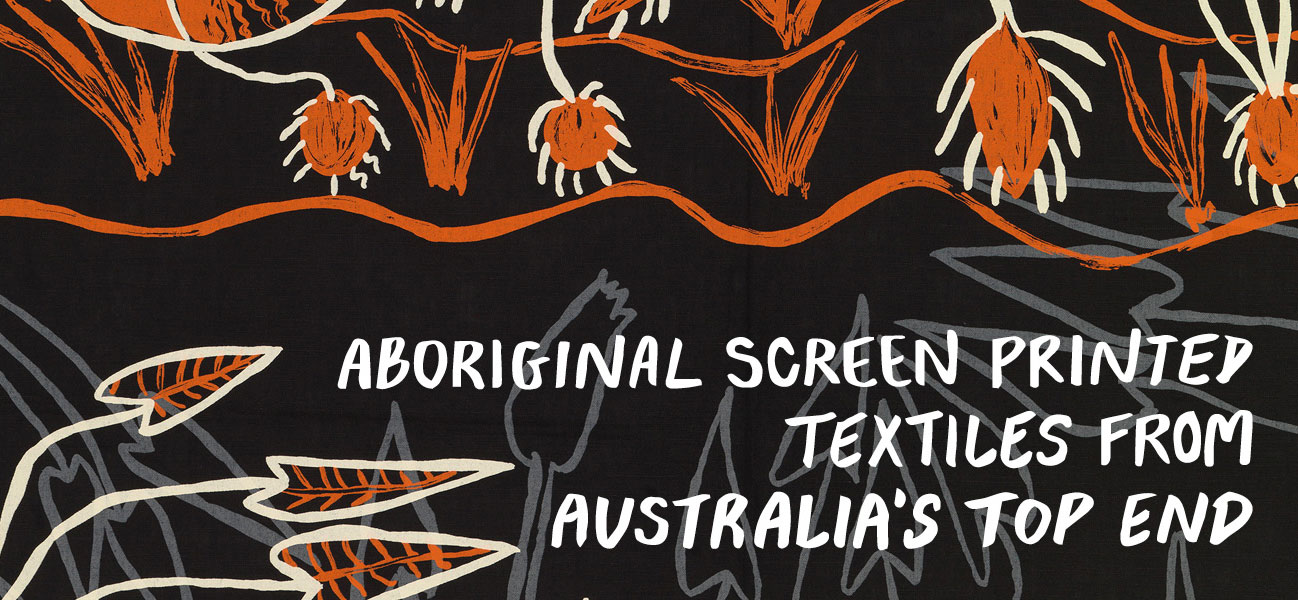The Fowler installation, organized around the individual art centers, reveals the creativity and innovation of Aboriginal artists and their sources of inspiration. Accompanying videos offer glimpses of the process of screen-printing textiles and the ways artists have translated ancient painting techniques into new media. The videos also introduce local environments—escarpments, flood plains, waterholes, rivers, and seas—that shelter the local flora and fauna seen on fabrics in bold colors and striking patterns. Screen-printed textiles enable Indigenous artists to share their cultures and identities, while providing them with a sustainable livelihood. The exhibition pays tribute to the resilience and beauty of Aboriginal Australia and reminds us of the enduring connections between peoples and their lands.
A richly illustrated volume accompanies the exhibition. It includes the featured textiles and contextualises them through essays written by 25 Aboriginal and non-Aboriginal artists, printmakers, art centre managers, curators, and scholars. Edited by exhibition curator Joanna Barrkman, the book details the history and role of textiles at each art centre; the production process and collaborative nature of screen-printing; product development initiatives; the ecological knowledge informing the fabrics; and the role of this relatively new art form in asserting both traditional and contemporary Aboriginal identity.
The exhibition features five Aboriginal-owned art centres: Tiwi Design, Jilamara Arts and Crafts Association, Injalak Arts and Crafts Aboriginal Corporation, Bábbarra Women’s Centre, and Merrepen Arts, Culture and Language Aboriginal Corporation.
